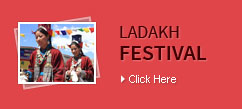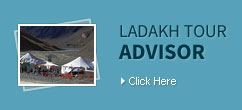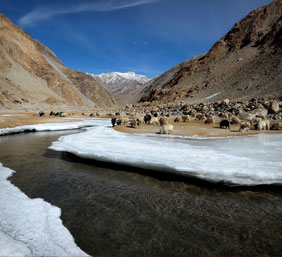
Changthang is a compound word of 'Changpa' translating to nomads and 'thang' - plains in Ladakhi. The Changthang Valley, also called the Rupshu valley, is a unique landscape.
The Changthang plateau lies on the eastern side of Ladakh near Chinese border stretching approximately 150 to 220 kilometers. The geographical setting is bestowed with snow peaks, which are the source of various Lakes. The temperature in the region varies from -5° Celsius to -35° Celsius in winter and up to a maximum of 30° Celsius in summer.
Nomads of Changthang
The people of the Changthang are pastoralists , they are known as 'Changpa'. Unlike many other nomadic groups, the Changpas are not under opting for sedentary life and settled farming, as the vast majority of land they inhabit is too inhospitable for farming. The Changpas have been herding livestock and living in tents or seasonal camps known as Rebo for many generations. These tents are used as shelter for at least six months in a year and are made up of purely black wool of matured Yaks, as it is believed that the use of even single white wool will shorten the lifespan of Rebo. After the collection of sufficient Yak wool, an Onpo or local astrologer is consulted to fix a date to start the weaving. Once the date is fixed a special skilled weaver with the help of 3-4 assistant weavers takes on the task of designing and preparing the wool. The tent is designed in such a way that it can be separated in two parts, so that it is easier to carry on two horses when transporting it from one pasture to another. A good and strong Rebo may last for 20-25 years in-spite of its use in harsh climate and can effectively withstand heavy snowfall, rainfall and wind without allowing any leakage or seepage. On the two or sometimes four corners, a bunch of black Yak hair is tied to a stick and planted on the ground to ward off evil spirit. Nomads of Changthang are devoted Buddhist, almost all the Rebo family have a separate space for keeping statues and pictures of deities and spiritual leader, H.H.Dalai lama being the most popular, besides which seven offerings of cups of water can be seen. Annually they donate some small amount to the monasteries under which their particular family or community falls. In addition to that there is a tradition that every family has to send one of their sons to the monastery to become a monk, which they regard as the highest offering to the Lord Buddha.
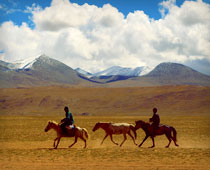 The economy of the region is based around the livestock. The most important resource is the pastures upon which the animals graze on. To preserve that resource the traditional transhumance is practiced depending on the season, which limits the impacts that their animals have on the grazing lands. Migratory routes are established and followed year after year, staying in the same encampments each year, often in camps that have stone walls for corrals and for sheltering the tents. Wealthier nomads may have separate buildings for storage and living.
The economy of the region is based around the livestock. The most important resource is the pastures upon which the animals graze on. To preserve that resource the traditional transhumance is practiced depending on the season, which limits the impacts that their animals have on the grazing lands. Migratory routes are established and followed year after year, staying in the same encampments each year, often in camps that have stone walls for corrals and for sheltering the tents. Wealthier nomads may have separate buildings for storage and living.
In addition to changing pastures, there are numerous other techniques developed by the Changpa to even out the periods of surpluses and shortages. Dairy products are converted into less perishable forms like butter and cheese during the summer when the livestock are producing high levels of milk. Animals are slaughtered early in the winter, after fattening up in the summer and when the weather is conducive to storage. Trade, mostly barter system, plays an important role for the Changpa as they are not able to produce all the goods they consume. Meat, live animals, wool, and unprocessed Pashmina are traded for basics products such as grain, cooking pots, and other metal implements, as well as for modern goods.
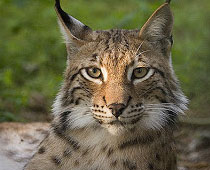
Wild Life Sanctuary of Changthang
The Changthang Wildlife Sanctuary is a home for many rare flora and fauna of Ladakh, which are well cared for in this wildlife sanctuary. Nomadic people prohibit hunting wild animal because of religious faith in Buddhism. It is believed that hunting or poaching around the lakes would displease the Holy Spirit which will bring wrath of the nature in the forms of heavy snowfall posing a great threat to their livestock for grazing on open pastures. As a result wildlife is well preserved in its natural state. The Changthang Wildlife Sanctuary is surrounded by two large and world-famous brackish lakes, Tsomoriri and Pangong Lake.
Pangong Lake
Pangong tso is an endhoric deep blue lakein the Himalayas,loacted on tha Changthang plateau at a height of about 4,350m(14,270ft) It is 154 km away from Leh. It is 134 km (83 miles) long and 5km (3.1 miles) at its broadest point and stretches from India to Tibet.The lake is a dead salt lake which supports no vegetation and aquatic life.Few migratory birds likw gulls and brahminy duck are seen now now then. During winter the lake freezes completely, despite of being saline and one can visit during tourist season from May to September.
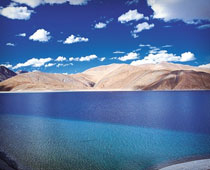 One cannot help but get mesmerised by the beauty of the lake, the vibrant colors of the water,the majestic surrounding mountains and the sense of freedom expressed by it.Its brackish water plays with the sunlight to produce different color effect which should not be missed by your camera's lens.
One cannot help but get mesmerised by the beauty of the lake, the vibrant colors of the water,the majestic surrounding mountains and the sense of freedom expressed by it.Its brackish water plays with the sunlight to produce different color effect which should not be missed by your camera's lens.
It is only five-hour drive from, while one requires an Inner Line Permit for visiting this lake as it lies on the Sino-Indian Line of Actual Control. Indian nationals can have individual permits while others require having group permits (minimum of 3 persons) accompanied by an accredited guide. Being near the border the lake can be explored only till Spangmik village. For security reasons, boating is not permitted in Pangong Lake.
Tso kar Lake
Tso kar Lake (White lake) isa scenic splendor located nearly 240 km southeast of Leh.It is a brackish water lake. This lake is popular among the bird watchers as it hosts many amazing birds which include black necked cranes, brahmni ducks, bar-headed geese and great crested grebe. The lake also attracts many wildlife lovers and most easily spotted mammals here are the Kiangs, the largest of the wild asses. Surrounded by hills and mountains on all sides, the lake itself gives a wonderful scenic view drawing many visitors. The area surrounding Tso Kar is procted and forms Tsokar Wildlife Sanctuary.Camping at nearby villages is a famous activity carried out here.Visit Thukje monastery and hot springs of Puga also.
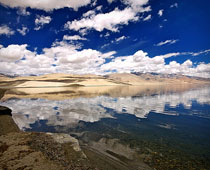
Tso Moriri Lake
Tso Moriri is picturesquely situated nearly 210 km from Leh district in the Rupshu valley in Changthang sub-division .It Stands at a height of about 4,900 m, with a length of about 28 km and width varying from 5 to 7 km, Tso Moriri Lake claims to be one of the beautiful and largest lakes in Ladakh. Surrounded by snow-capped mountains on all sides, the view of the lake is amazing.
The lake is fed by two major streams which create extensive marshy land .It well known for spotting some of the popular wild species of Ladakh, especially kiang, or natural ass. One can also get to see groups of travelling nangpa or bar-headed birds, along with sporadic flocks of pashmina goats and champs of travelling herders.Officially the lake is known as Tsomoriri Wetland Conservation Reserve.


